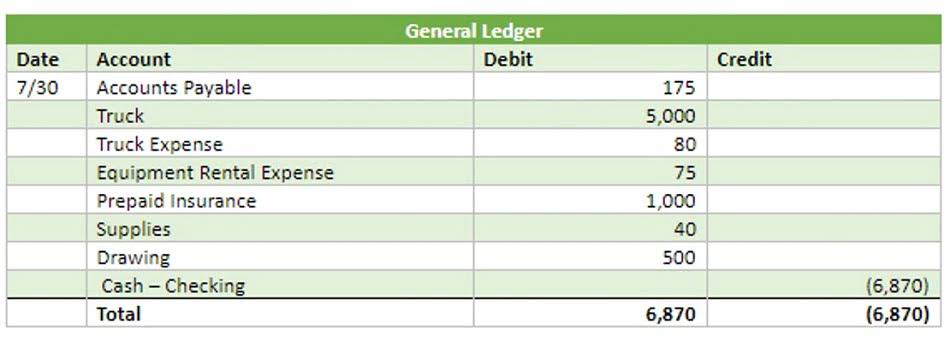
DSI is a critical metric in inventory management that measures how efficiently a business converts inventory into sales. Often referred to as the average age of inventory, it provides insights into inventory liquidity, helping businesses streamline production, reduce storage costs, and improve cash flow. Beyond operations, DSI also serves as a key financial indicator for assessing management effectiveness and supply chain health, offering valuable insights for investors and analysts. Properly managing your inventory levels is vital for all businesses, even more so for those of you that have retail companies or those selling physical goods. Managing inventory levels is vital for most businesses, and it is What is bookkeeping especially important for retail companies or those selling physical goods. Seasonal demand fluctuations or long production lead times can cause significant variability in DSI, making it less reliable as a consistent measure of efficiency.
![]()
FAQs About Days Sales of Inventory

By unraveling the power of DSI, businesses can orchestrate their operations, drive improved performance, and harness the winds of success. Days Sales of Inventory (DSI), also known as Days Inventory Outstanding (DIO), is a financial metric that calculates the average number of days it takes for a company to sell its entire inventory. It provides an indication of the efficiency of a company’s inventory management by measuring the speed at which inventory is converted into sales. Early-stage products often have higher DSI as companies build inventory to meet anticipated demand, while mature products generally experience lower DSI as demand stabilizes. During economic downturns, reduced consumer spending can slow inventory turnover, increasing DSI, whereas periods of economic growth can drive higher demand and lower DSI. By understanding these factors, businesses can make strategic adjustments to manage inventory levels effectively and improve operational efficiency.
- Regular monitoring of DSI helps in identifying trends, addressing issues promptly, and aligning inventory management with changing market demands.
- Therefore, it is important to compare the value among the same sector peer companies.
- The denominator (Cost of Sales / Number of Days) represents the average per day cost being spent by the company for manufacturing a salable product.
- Cross-referencingOur system has information on more than 21 million parts, allowing you to make sure that a part fits a particular vehicle and to maximize use of existing inventory.
- For most businesses, calculating DSI every month is beneficial as it aligns with typical accounting periods and provides timely insights into inventory efficiency.
- DS is dedicated to providing top-notch service with quick and accurate deliverables.
- Check out our detailed blog post on how to calculate the cost of goods sold.
Days Sales in Inventory (DSI): Evaluating Quality of Earnings and Inventories

These include the average age of inventory, days sales in inventory, days inventory, days in inventory (DII), and days inventory outstanding (DIO). Calculating a company’s days sales in inventory (DSI) consists of first dividing its average inventory balance by COGS. A low days sales of inventory (DSI) suggests that a firm is able to efficiently convert its inventory into sales. This is considered to be beneficial to a company's margins and bottom line, and so a lower DSI is preferred to a higher one. A very low DSI, however, can indicate that a company does not have enough inventory stock to meet demand, which could be viewed as suboptimal.
What is Days Sales of Inventory (DSI)?

But the COGS value could also be obtained from the annual financial statement. Keep in mind that it’s important to include the total of all categories of inventory. On top of all of this, one of the biggest factors of importance is that the longer a company keeps inventory, the longer it won’t have access to its cash equivalent. Therefore, the company wouldn’t be able to use these funds for other operations and opportunities. In short, the DSI inventory calculation is generally of supreme importance for business models in industries with fickle demand.
Days Sales of Inventory Formula
The system provides critical management information based on your dealership and compared to your benchmarks. For example, DealerAlert automatically lets you know that a part you are about to order is overstocked in another branch of the company. You learn instantly if a customer requesting service hasn’t paid a previous bill. Understanding the DSI metric is crucial for effective inventory management and https://www.bookstime.com/articles/bookkeeping-for-ebay-sellers overall business health. Once we know the average inventory and COGS values, we can find the inventory turnover ratio.
What is inventory revaluation and how does it help your business?
For the year-end 2015 financial statements, Target Corp. reported an ending inventory of $1M and a cost of sales of $100M. Given the figures, the DSI for the year is 3.65 days, meaning it takes approximately 4 days for the company to sell its stock of inventory. Days sales of inventory (DSI) estimates how many days it takes on average to completely sell a company's current inventory. Due to this, you should be comparing value among their same sector peer companies.
- Tracking both KPIs is useful as it can provide detailed insights for product lifecycle management, inventory optimization, pricing strategies, etc.
- If you know how many sales you make per year, you might wonder why it matters how long each piece of inventory takes to sell.
- Often, businesses look at a full year, which is 365 days, but you can choose a shorter period if it suits your business better.
- Generally, a small average of days sales, or low days sales in inventory, indicates that a business is efficient, both in terms of sales performance and inventory management.
- Alternatively, another method to calculate DSI is to divide 365 days by the inventory turnover ratio.
- Additionally, streamlining the supply chain by improving supplier relations and logistics can reduce lead times and keep inventory levels in check.
Advantages and Limitations of Days Sales in Inventory

By calculating the number of days that a company holds inventory before it’s sold, this efficiency ratio measures the average length of time that a company’s cash is tied up dsi accounting in inventory. Historically, companies like XYZ Corp faced ballooning DSIs due to inefficiencies. After analyzing, they revamped their supply chain strategy, leading to reduced DSIs, profit margin and enhanced liquidity.

